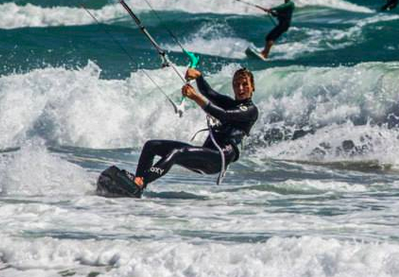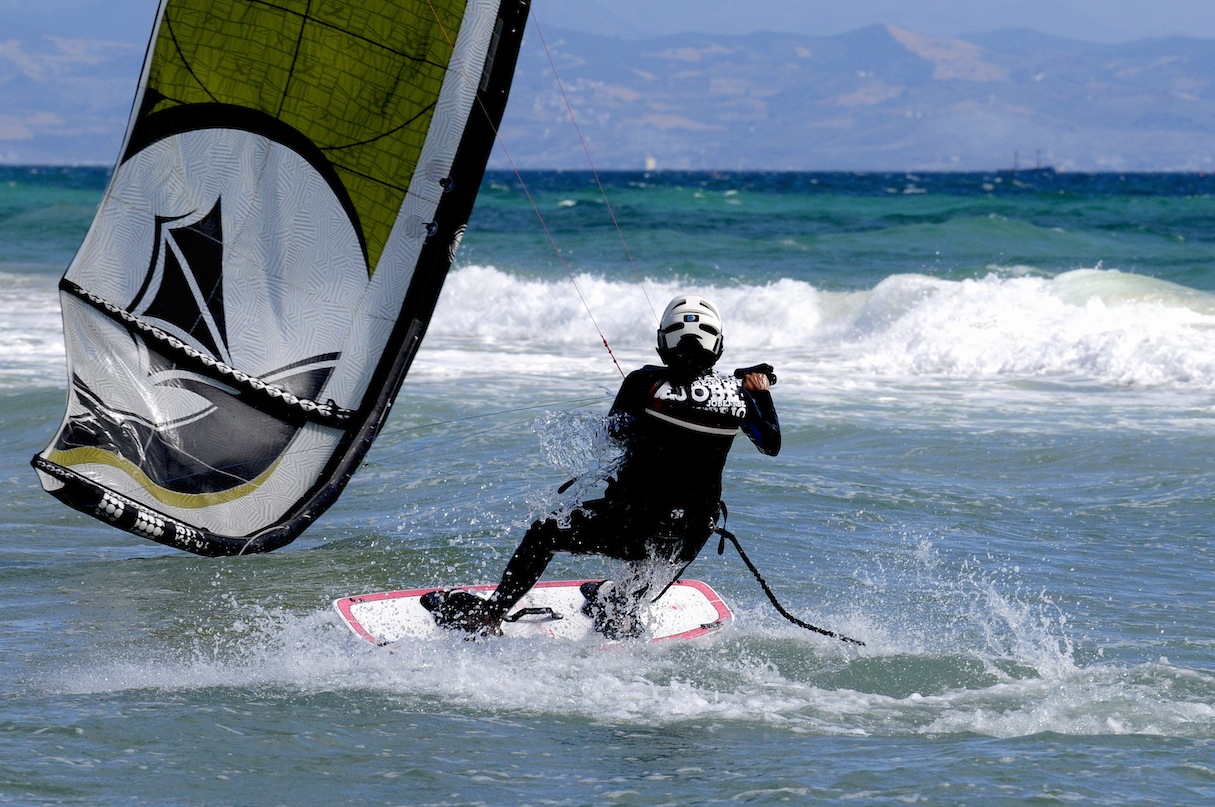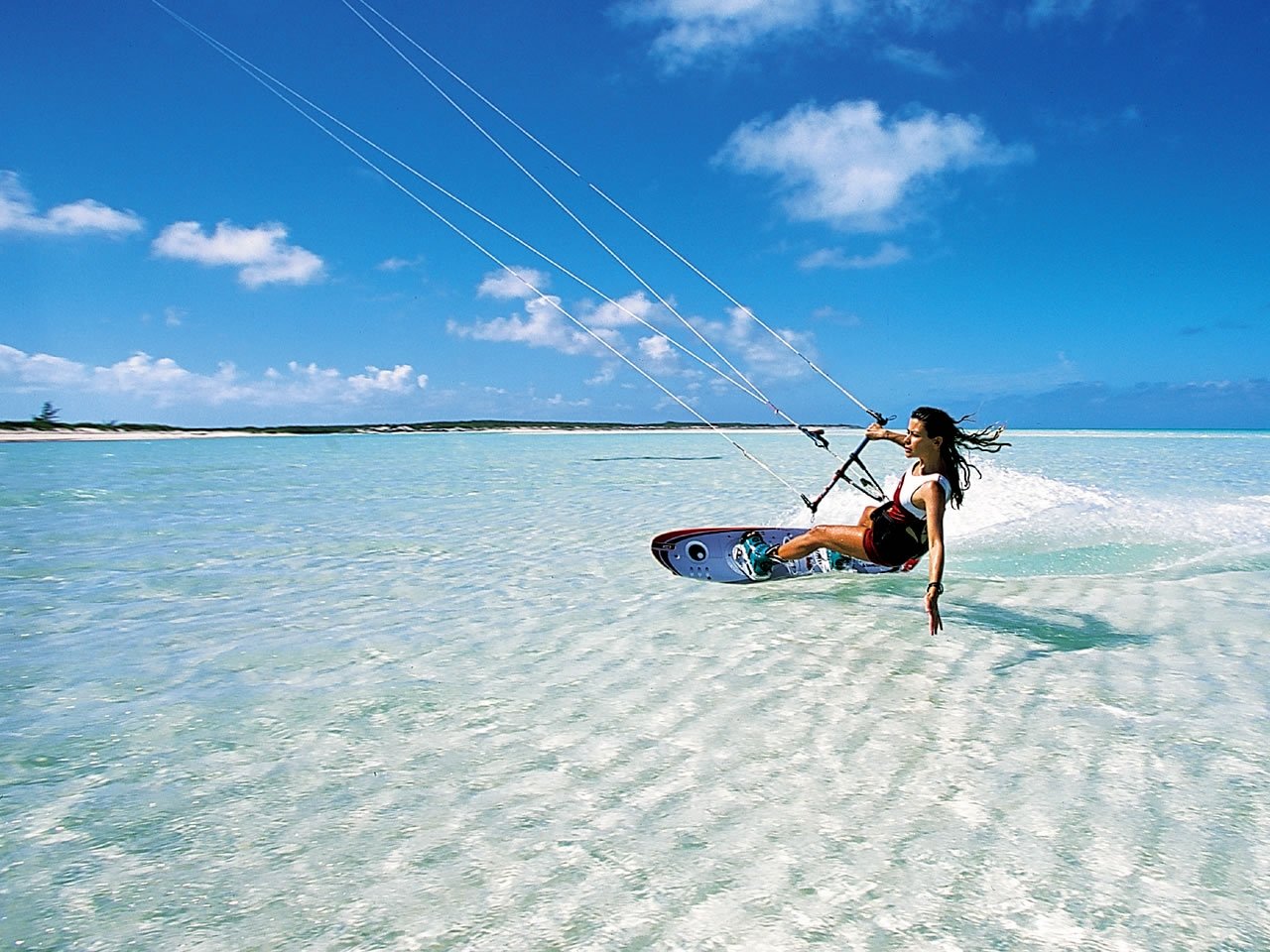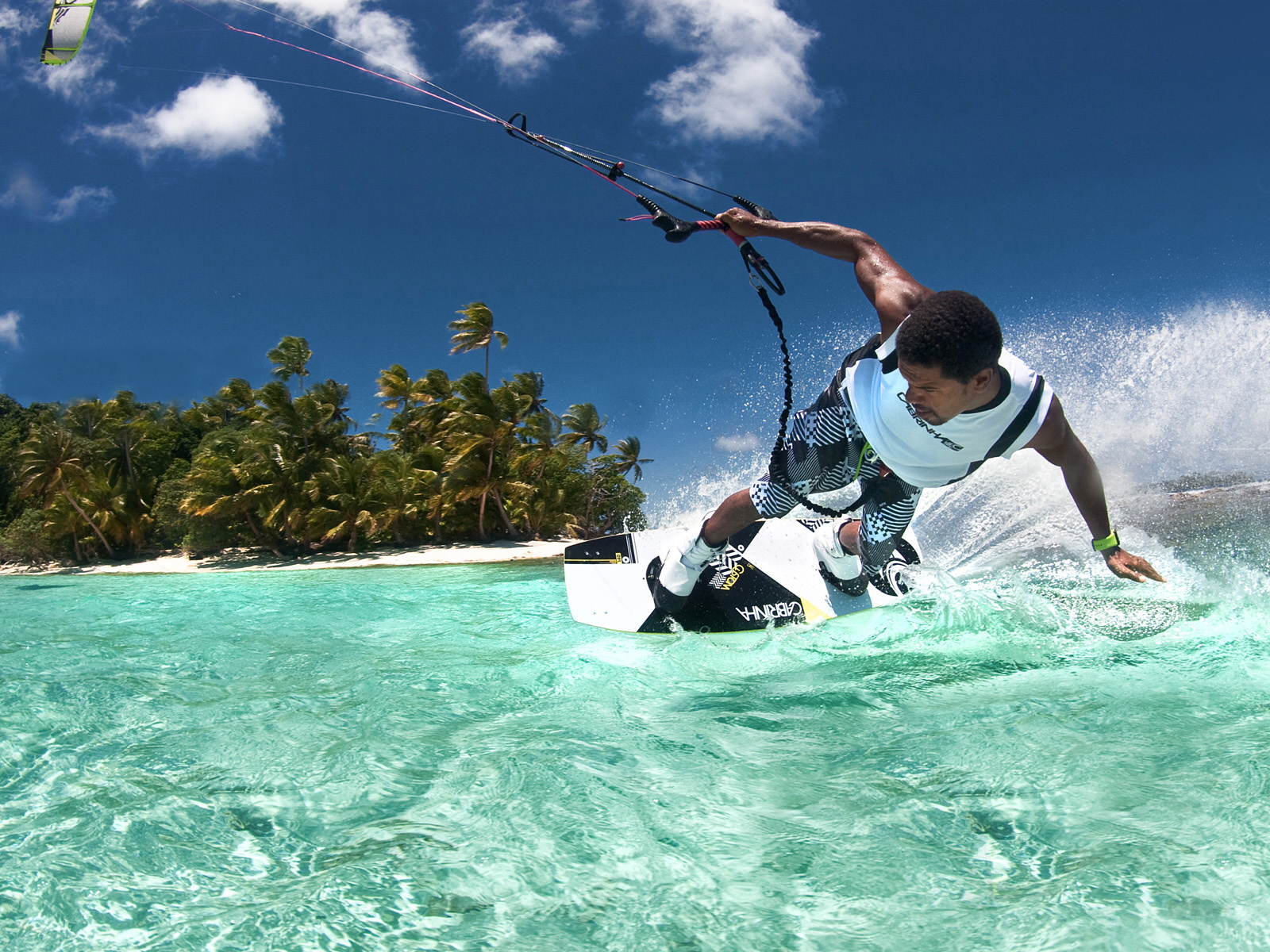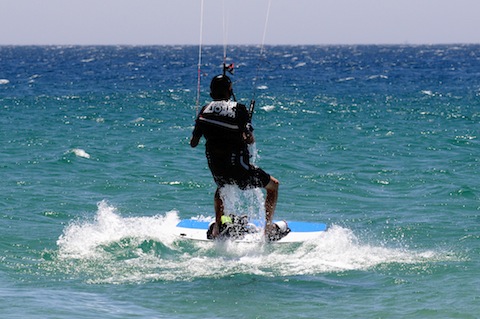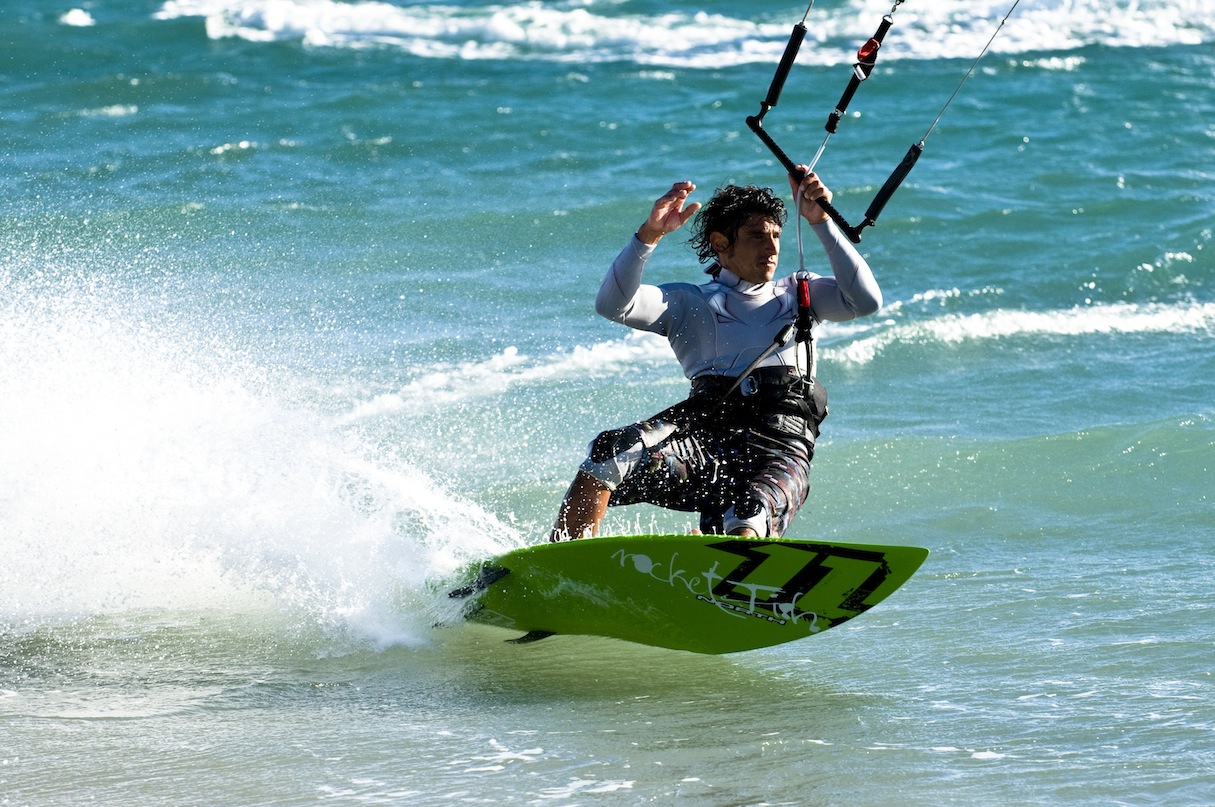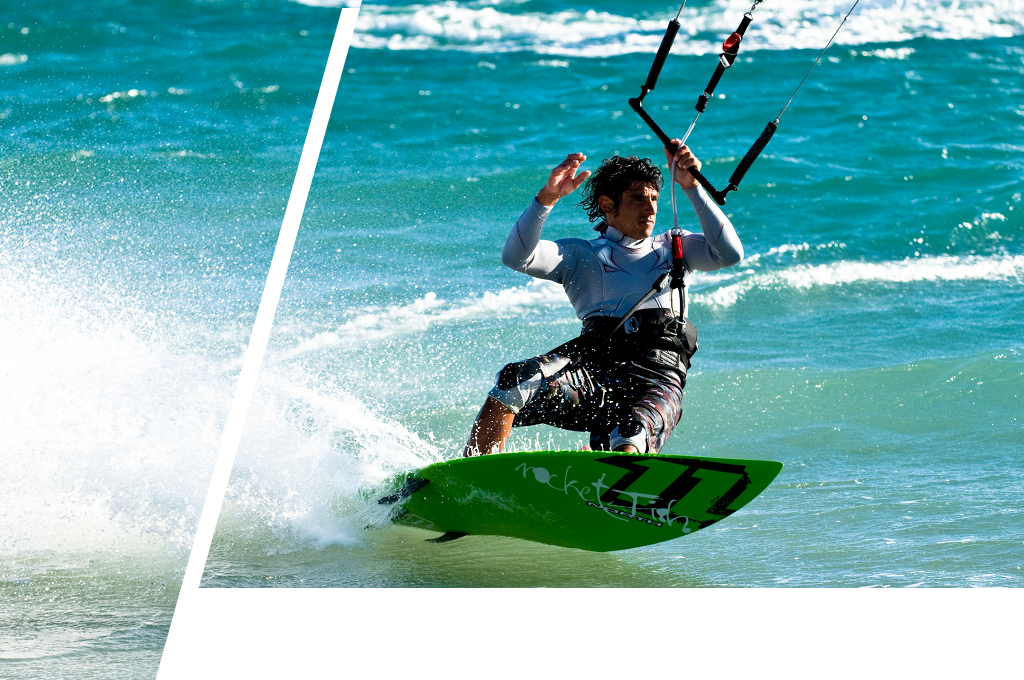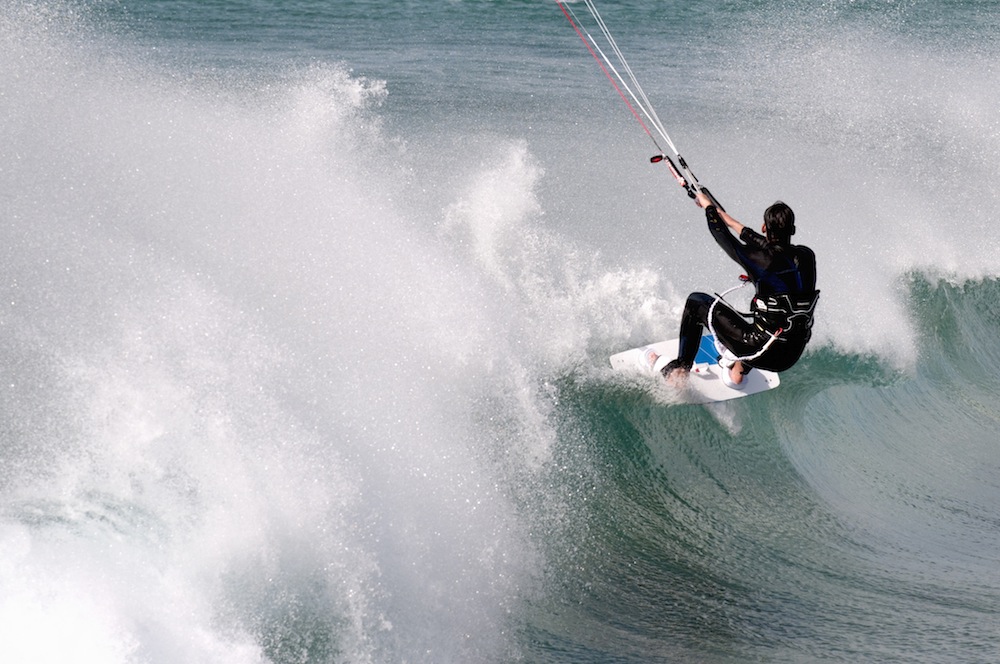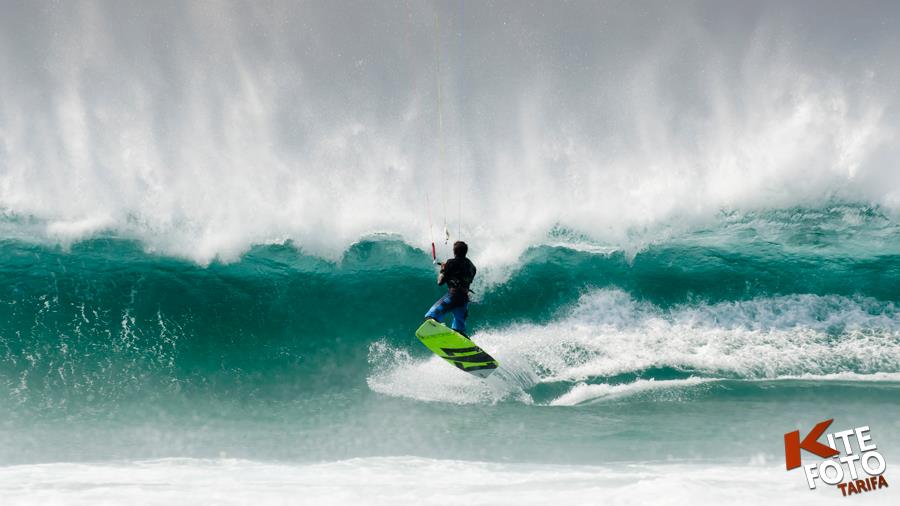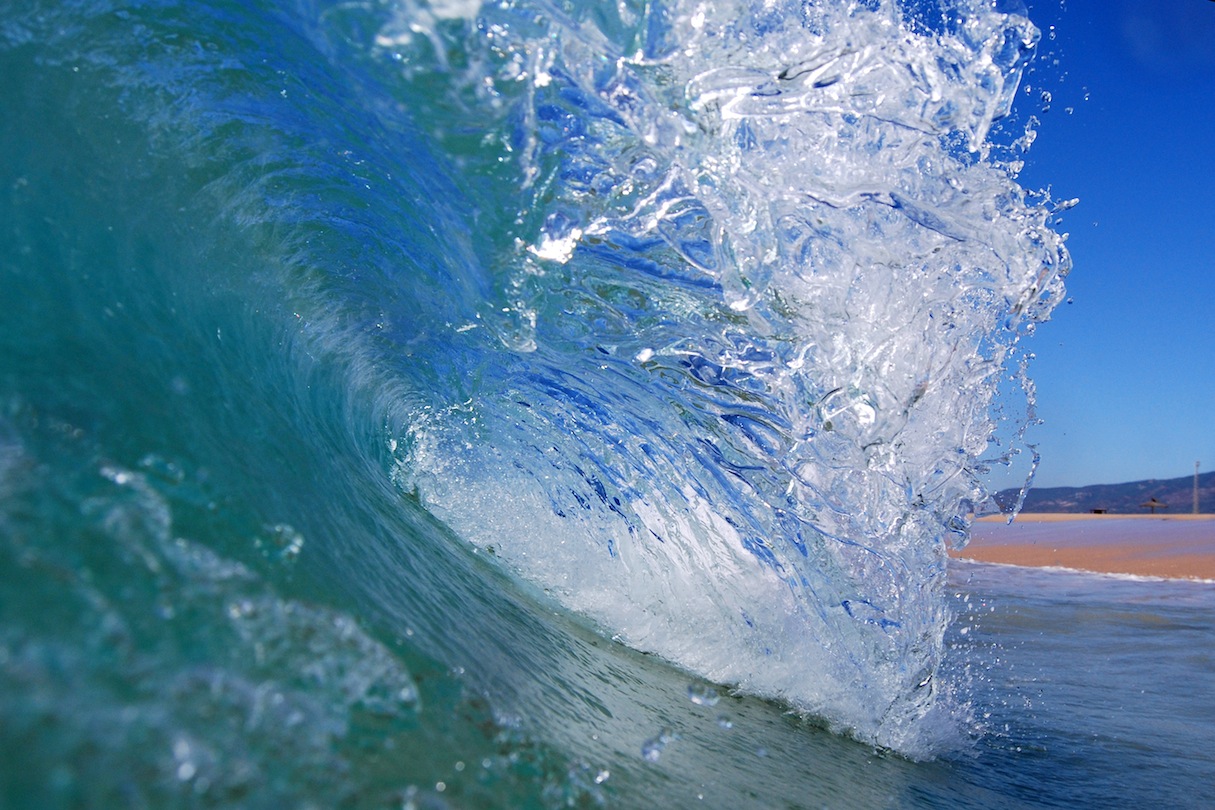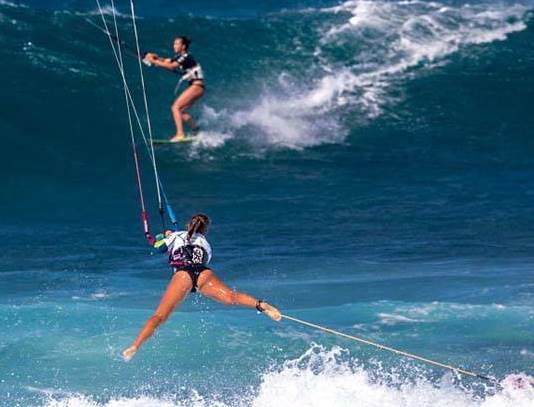
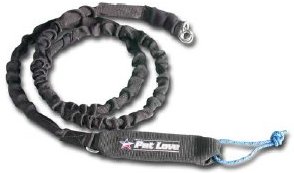
Whether to use a board leash or not is something that every aspiring kitesurfer asks at some point. Here I lay out the arguments for and against so you can make up your own mind.
What is it for?
Board leashes were designed to prevent you from losing your board. As a beginner you will be coming off your board and crashing your kite lots. Having a board leash on gives you one less thing to worry about while your struggling to re launch your kite as you don’t have be concerned that your board is disappearing as you go. Leashes however, have several spin off advantages which can be even ore useful to the aspiring kitesurfer than the use for which they were originally intended.
The main advantage to wearing a board leash for the beginner is that while your practicing to board start or enjoying your first runs on the board you won’t have to spend time chasing your board around every time you fall off or let go of it. This can lead to you having much more time to actually practice your board starts/riding skills as opposed to your body dragging skills. This simple piece of equipment can decrease your learning time by hours even days if the water state is pretty rough or the local conditions not ideal.
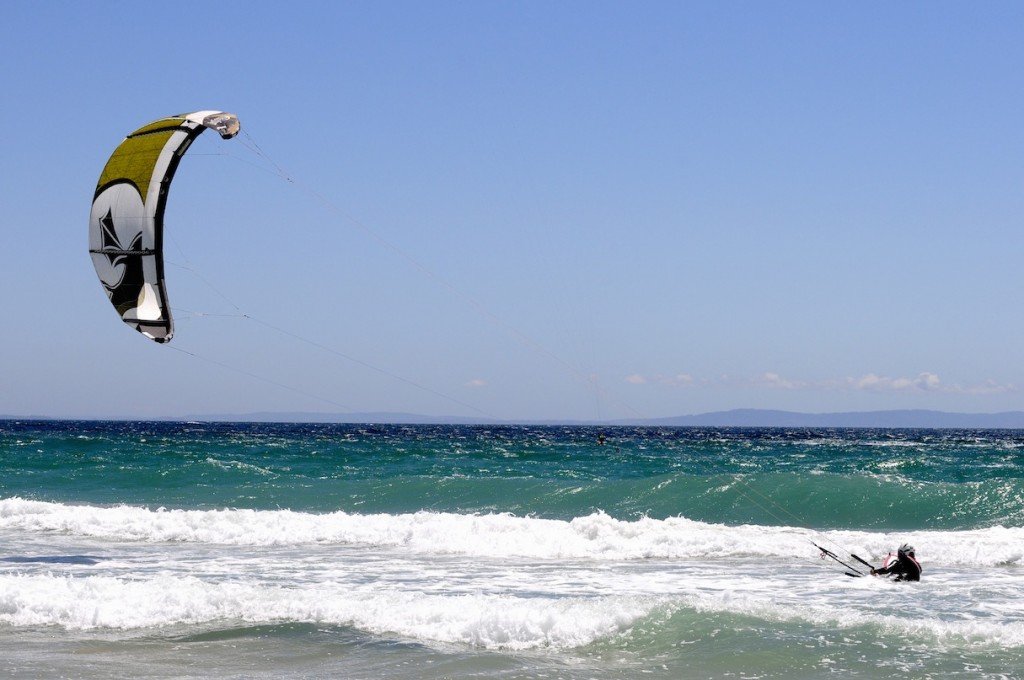
Added to this is the fact that by using a board leash you have 2 hands free at all times to control the kite. This can be a huge advantage if you’re trying to drag out through big waves or if you’re still not 100% confident on the kite.
Mother Nature is her own Guardian
Having said that however, I firmly believe that Mother Nature sets up her own gateways to entry and that if you are at a stage where you are struggling to either recover your board all the time by body dragging or you can’t get out through the waves while flying the kite one handed you shouldn’t be practicing with a board at all, but should be working on these skills instead.
The major problem here is that we are all human, we all over fixate on getting on the board and riding and will tend to push ahead to master these (cool) skills first, coming back to polish the other (less impressive) skills (such as upwind body dragging…yawn) later in our kitesurfing careers.
This leaves massive gaps in your skill set that WILL come back to bite you later on.
The Cruise Missile of Kitesurfing
When it comes to the down sides of using board leashes the consequences are slightly more scary.
Riding with a board attached to you is not dissimilar to being chased by a guided missile.
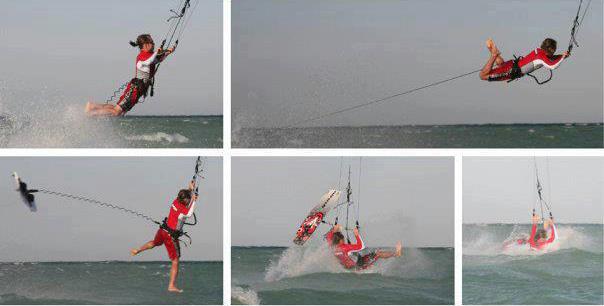
If you come off the board at any speed, tension can stack in the line and when the leash reaches it’s elastic limit there is only one way it’s going…straight back at you. This can lead to some very nasty accidents and it for this reason that if you are going to use a board leash you should also have a helmet and impact vest/buoyancy aid to protect your vital parts.
Before you think, “that’ll never happen to me and the advantages sound great, I’m gonna get me one of those,” I would do a quick internet search on “kitesurf board leash injuries” and see if you still want to wear one!
Watch Your Tender Bits
The leash can also be a hindrance when exiting the water. If you dally in the shallows the board has a tendency to get picked up by the waves as they ebb off the beach. The next wave to arrives then picks up the board and slams it into your heels/shins/other tender bits! When exiting the water with a leash in waves do it fast or unattach the board before you try.
The same applies when you have a leash in bigger waves. If the board gets behind you, then the next passing wave can pick the board up and slam it into you.
Of course these things can also happen even if you don’t have a leash but the leash keeps the board closer to you and so increases the likelihood of something like this occurring.
What About Dog Leash Style Leashes (Reel Leash)?
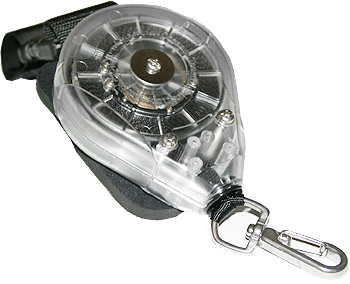
There are some reel leashes that are designed like dog leashes, that extend out to about 30 meters and after they have extended this far release very easily so you never have the problem of slingshotting the board back towards you. Great you may think I’ll go and buy one of those.
Any leash can get wrapped around either you or your bar and lines, with the latter being particularly serious as this effectively strangles your control of the kite often locking the kite onto full steering and sending the kite into a roll with the board dangling around in front of you as you fly down the beach…conveniently enough, the perfect position to wallop you in the kisser.
As these dog style leashes are even longer than normal leashes the likely hood of this happening is even greater…the idea of riding around with potentially 30m of slack line somewhere in my vicinity scares the bejesus out of me just thinking about it anyway.
But I have a fuse line on my leash so it will break if any force is put through it.
Coming off the board at speed with a leash should result in the leash attachment line (or the fuse line) breaking so that the board isn’t damaged. If this line is too strong (and you’ll never know until you use it!) or doesn’t break for some reason (more likely), as well as all the consequences to you, it can result in damage to the board as something has to give. I’ve seen huge chunks torn out of boards because of this.

Dependency & Withdrawal
The other issue attached to wearing leashes is more practical in nature. By becoming dependent on a leash you reduce the time you’re practicing upwind body dragging. This is an essential skill which needs to be mastered early if you are to progress to becoming an independent kitesurfer. Believe me, I spent a year learning this particular skill and the hours of time I wasted and the number of boards I lost because of my stubborn refusal to learn cost me more than I like to think.
The Alternative
Go Joe’s may have a stupid name but these things really work!
The idea is that you fix the Go Joe on to your board under the handle. Now whenever you come off the board the Go Joe causes the board to automatically right itself, the wind catches the Go Joe and pushes it downwind…fast, so it should end up in front of you.

We trialled these for a while and although they work great they did suffer from durability problems as the bladders just kept exploding on us.
What About In Waves?
Ok so this is the only time I would contemplate wearing a board leash. In big waves you’ll often be riding on reef breaks, cliffs or ridiculously remote beaches where to lose your board would mean it gets smashed to pieces on the rocks or it’s a MAJOR ball ache to retrieve it.
In wave spots a lot of riders will be concentrated in the same area (the line up) and having you body dragging through it and a loose board caught in the waves becomes a real pain in the neck and a real danger to others respectively.
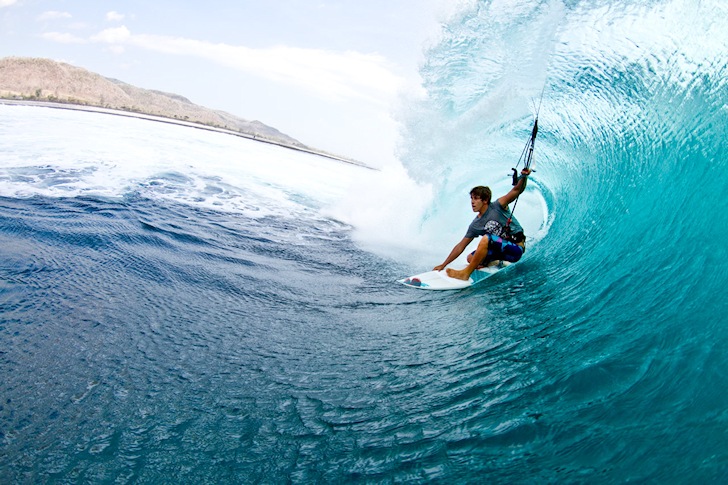
These great tips are taken from The Kiteboarder Magazine.
- Use a medium length leash: a 6-foot leash will put the board in your face and a 9 to 10 foot leash will cause too much drag. An 8-foot leash seems to work the best.
- Use a cord thickness commensurate with the size of your waves -thin leashes snap in double overhead waves, thick leashes cause excessive drag.
- The moment you are separated from your board, depower your kite by pushing the bar away from you; this prevents the kite from loading up the board leash.
- When in the water separated from your board, bring your kite up to neutral, keeping it depowered as much as possible to prevent the board from becoming a tombstone.
- When you are retrieving the board, use the leash – it often helps if the kite is brought to the same side of the wind window as your board.
- Try experimenting with a calf leash. Its velcro strap is large enough to attach just below your knee, elevating a good portion of the leash out of the water and reducing drag.
- Wear a helmet or chest protector because unless you have a surgeon for a friend or in the family, stitches can be expensive.
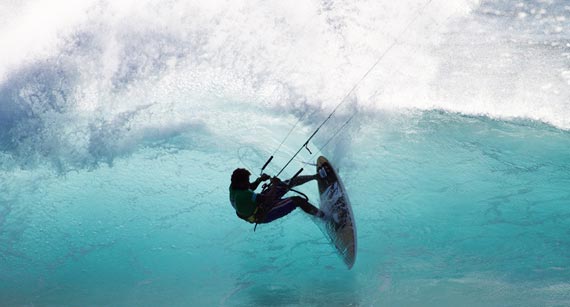
PROS OF WEARING A LEASH IN WAVES
- In big surf you can go for anything and know that your board is always within arm’s reach.
- You won’t spend half your session on a fishing expedition.
- Your friends will no longer hate you for the countless times you body dragged through their set while looking for your board.
- If you’re headed out and the lip throws right in front of you, you can jump off your board and duck dive into the wave, collecting your board quickly on the other side.
- You have a better chance of getting back on your board before the next set wave rolls you.
CONS OF WEARING A LEASH IN WAVES
- Bad technique can lead to endless tombstones and whizzing boards.
- Leashes inevitably add drag while going upwind or dropping in on light wind days.
- Since your board stays in your vicinity you have a better chance of getting whacked in the head.
- If both you and your kite go down in turbulent white water, the board and leash can end up threaded through your flying lines making things much worse.
For me, unless I was in a dedicated wave spot which broke onto a reef or was kiting somewhere ridiculously remote I wouldn’t generally bother with a leash. I’d simply accept the fact that I was going to body drag a bit and get on with it.
The Final Word
If this all sounds like a very negative assessment of board leashes …well it is.
We used to use them, 2 smashed noses and a few trips to the hospital later, we vowed never to use them again. As a result of this decision our methods of teaching have had to adapt (and improve) and our students learning times have actually increased dramatically because of the changes we’ve had to make and the higher focus we’ve had to place on basic kite skills.
It also means I’m seeing far less of certain nurses at the local hospital…hmmm…maybe time for a re think!
If you’re just getting started in kitesurfing now’s a great time to grab our free 7 day kitesurfing specific workout. Giving you all the exercises you should be doing to get yourself in shape for your next session. Grab the free workout here >>
